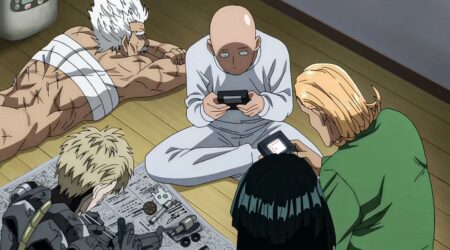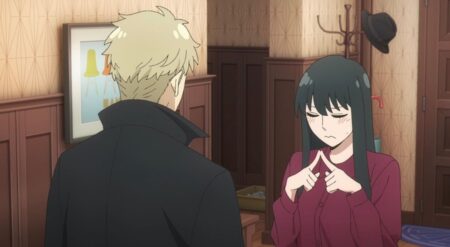
Resident Evil is one of the most iconic and genre-defining horror franchises in gaming. Created by Capcom in 1996, the franchise and its characters have been pop-culture mainstays in multiple forms of media in both the United States and Japan and is now celebrating its 25th anniversary. And what better way to celebrate 25 years of zombie mayhem and corporate intrigue than a Netflix Original CG anime series? This is what we get with RESIDENT EVIL: Infinite Darkness.
Like most of the Resident Evil animated films, RESIDENT EVIL: Infinite Darkness is based on the series, working in canonical elements from the games but still presenting an original story for the audience. The limited 4-episode series is created by Hiroyuki Kobayashi, animated by Quebico, produced by TMS Entertainment, and is directed by Eiichiro Hasumi, who is no stranger to adapting works to animation with his work on the Assassination Classroom live-actions. It also features a story by Shogo Mutoha and Hasumi with Tony Ishizuka serving as creative advisor and Yugo Kanno as the anime’s music composer.
The series tells two stories, one from 2000 and one set in the present, 2006. It’s told through multiple flashbacks that add layers and context to the present.
In 2000, a helicopter belonging to the U.S. special forces who were intervening in the Penamstan civil war fell from the sky but instead of bugging out, the U.S. Army Mad Dogs, who were in the same battleground, refused orders from the command center to stand their ground and instead went to save survivors of the crash. But, the special forces were already annihilated, leaving The Mad Dogs, led by captain Jason (Ray Chase), the “Hero of Penamstan,” forced to escape in order to survive—fighting an outbreak along the way.
In 2006, a hacking incident occurs on a top-secret White House file, which leads to Resident Evil pretty boy Leon Kennedy (Nick Apostolides), Jason, and two other agents being invited to the White House in order to investigate this incident. However, when the lights suddenly go out, they are forced to take down a horde of mysterious zombies alongside the SWAT team. The night of zombie fighting pushes them to retrieve the secret file which is found to be related to a biology laboratory in Shanghai. Leon and the other three agents decide to investigate for clues.
But the present doesn’t just focus on Leon, it also tells a story through Claire Redfield’s (Stephanie Panisello) point of view as well, as she attempts to unravel the truth around the 2000 incident. While staying in Penamstan to provide support for refugees, Claire encounters a strange image drawn by a nonverbal boy illustrating a scene that immediately reminds her of her time in Raccoon City. This pushes Claire to start her own investigation into what exactly happened in the “war.”
That said, everything I’ve explained above, you can find out from the press releases that came out prior to the limited-series release. The true meat of RESIDENT EVIL: Infinite Darkness is how all three stories are pulled together, weaving in and out of each other, with each strand building a slow and steady context around large events in the series. The connection of each story is a lot, and with a climax happening pretty much every episode, it’s tough to keep upping the action and storytelling at an even pace when the end of every episode features a narrative-changing moment. And for the most part, RESIDENT EVIL: Infinite Darkness manages to handle it well enough. If you take each episode as a video game level, then the series’ pacing works, with an exception for certain monsters not having any explanation for being there.
In fact, RESIDENT EVIL: Infinite Darkness feels like a video game in every way. And while this is to expect from one of the CG animations, there are moments where it uses video game aesthetics and level design to its advantage and other moments where it gets bogged down by it.
The animation, while overall entertaining, feels stiff. This is due in large part to the lack of movement in the clothing and the way that the female characters’ ponytails are animated. Additionally, while character designs especially benefit from video game boss aesthetic, like a big red spot where they can take damage, the designs aren’t used in combat. This led me to wince every time the big red spot wasn’t hit.
But even with its stumbles, the video game plotting and movement are what benefit RESIDENT EVIL: Infinite Darkness. With scenes that take into consideration boss battle mechanics like dropping platforms, or avoiding thrown objects, the series feels like the game series. And there are also moments that mimic the same claustrophobic fear instilled in the house horrors of the original games and the last two new installments Resident Evil 7 and Resident Evil Village That means that for fans of the series, it will hit.
Overall though, I feel like it would be a disservice to viewers not to mention that RESIDENT EVIL: Infinite Darkness is far more about geopolitical intrigue, corporate espionage, and surviving war than it is about killing zombies. While this is par for the course of the franchise, the lack of large zombie sequences was slightly disappointing and you should enter it with adequate expectations. In the end though, RESIDENT EVIL: Infinite Darkness finds itself right in the middle. It nails gaming elements but doesn’t capture the magic needed for an adaptation where I’m not the one moving the character. That said, it is good enough to warrant a sequel, and with its ending, the door is open.
RESIDENT EVIL: Infinite Darkness is streaming exclusively on Netflix July 8, 2021.
RESIDENT EVIL: Infinite Darkness
-
Rating - 6/106/10
TL;DR
In the end though, RESIDENT EVIL: Infinite Darkness finds itself right in the middle. It nails gaming elements but doesn’t capture the magic needed for an adaptation where I’m not the one moving the character. That said, it is good enough to warrant a sequel, and with its ending, the door is open.







